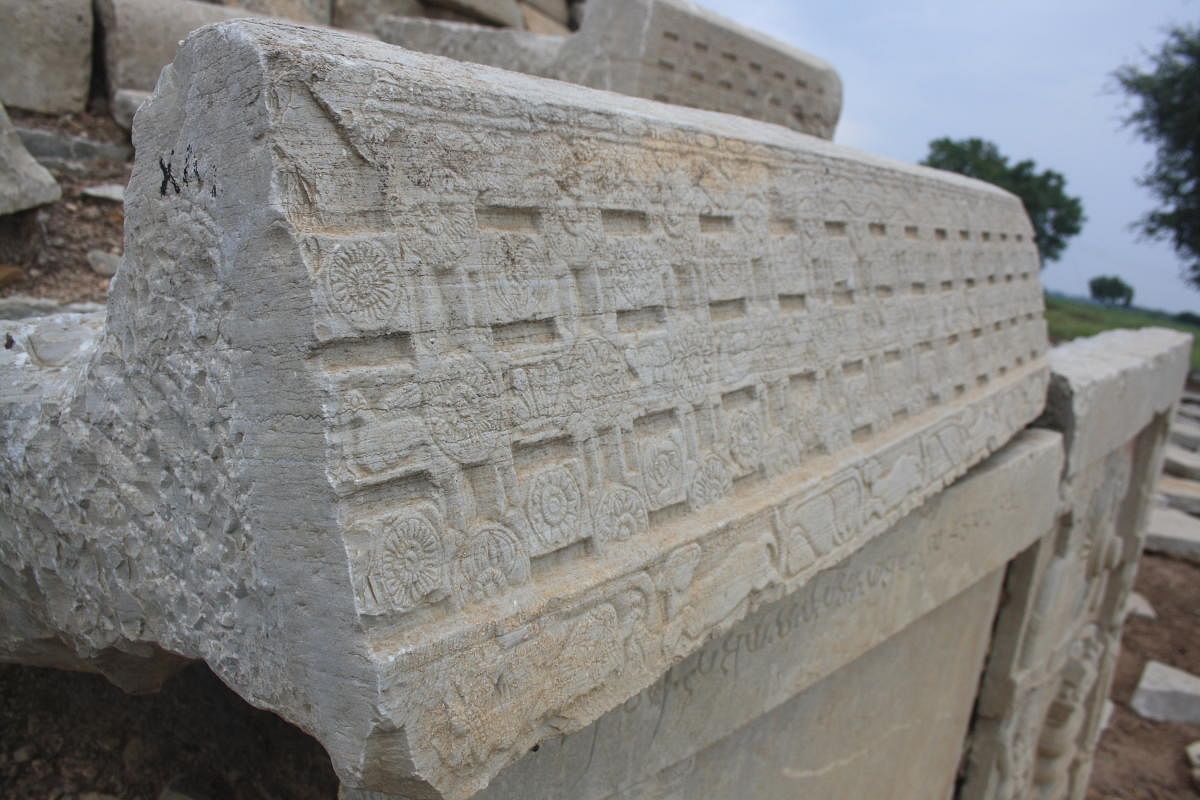
Historical reconstructions are necessarily based on reliable and authentic documents. New discoveries of such documents or a restudy of existing sources necessitate revision of known historical facts or add a new dimension to the inconclusive facets of history. This is more so evident in the study of Ashokan special edict of Kanaganahalli (Sannati) and the numerous label inscriptions found on sculptured panels clading the dome of the stupa there.
For instance, a fresh inquiry into the term Isila and that it is not the oldest Kannada word, but a Prakrit term, led to renewed search for the oldest Kannada word, perhaps older than Isila.
So, the attention fell on the early Prakrit inscriptions. Researchers have divided the Ashokan inscriptions (edicts) into three major categories: pillar edicts, major rock edicts and minor rock edicts.
A large number of minor rock edicts were issued in the Deccan region during the 3rd century BC.
Besides a number of minor rock edicts, a major rock edict (Yarragudi), a pillar edict (Amaravati) and a special edict (Sannati/Kanaganahalli)) were introduced by Ashoka to South India. They draw our attention as they refer to Ashoka’s two administrative units, Suvannagiri and Isila.
Interestingly, neither Suvannagiri nor Isila continued to exist after Ashoka’s rule.
Excluding Suvarnagiri and Isila, none of the inscriptions discovered in the Deccan region mention the names of the places where they have been found. Though these places were in existence in the 3rd century BC, they did not have names, as they were associated with the Iron Age communities.
Amongst these, the name Kupana or Koppal (now) is significant and noteworthy. Koppal is now a district headquarters in Kalyana Karnataka.
People during the Iron Age did not have the tradition of identifying their villages by names. Even though they did identify their villages by names, they did not write the names as they were preliterate people. It is noteworthy that all the known Ashokan edicts in Karnataka are located in the neighbourhood of Neolithic-Iron Age settlements of the last three millennia.
These communities were introduced to a written language by Ashoka and interpreted by his emissaries.
It was Satavahana rulers and their contemporaries who nurtured the art of writing in the first phase (between 2 BC to 2 AD end). The tradition of writing became universal across the Kannada region since 2nd century AD. Interestingly, all these three inscriptions of Ashoka were carved around the same time.
In the two inscriptions discovered at Koppal, Ashoka speaks about himself and the pledge to be taken by the communities that were at the bottom of social strata during the Iron Age.
He says that he visited the Sangha two-and-a-half years ago, which enhanced his concern for the people and that ordinary men did not have access to god or heaven. And that access to heaven was not the preserve of the elite or upper castes.
He propagates that people of the lower rung could attain salvation if they lived an ethical life or the code of Dhamma (and indirectly questioned the Karmasiddhanta).
Kupana-Kopana-Koppal
A careful analysis of these editcts makes it clear that during the Satavanaha period, Kupana was not just a settlement place, but had gained qualifications of an administrative unit.
Obviously it was a centre of the treasury. The most important point is that an administrative unit named Raththa or Rastra was housed at this place. This Raththa (identified as Mahisha Mandala in Buddhist records) was an administrative unit of Mahisa.
The greatest achievement of this 2,000-year-old town is that it retained its name throughout different phases of history of Karnataka.
It was known by the name Kupana and Kopana during the first millennium, as the language of trade and commerce changed from Prakrit to Sanskrit, and then to Kannada. However, the only change in its name was from letters ‘Na’ to ‘Nna’ — ‘Kupana’ to Kupa’nna’, and the letter ‘Ka’ to ‘Ko’ (‘Ku’pana-’Ko’pana).
Kupana, a Buddhist centre in the early phase, became a Jaina centre, thrived as the Jain centre for over a thousand years. Now it thrives as a Shaiva centre!
References to this place was not only restricted to Prakrit edicts, but also finds mention in Kannada Kavya literature. Srivijaya, the first Kannada poet, who penned Kavirajamarga, celebrated the place as Mahakopananagar.
The first prose poet Chavundaraya described it as Kopanadri (Champu Kavya) in the 10th century AD. The Ganga king Chavundaraya’s favourite ‘Champu poet’ Ranna refers to it as Kopanachala. Such references by master poets testify to the continuing sanctity of Koppal.
I wonder if there is any other place with such a long historical continuity and I believe it provides a greater impetus for further research to search other places with similar historicity in the records of the state’s history.
As far as I know, Kupana (Kupana-Kopana-Koppal) that has retained its name for too long exists in the history of Karnataka. This provocation needs a follow-up.